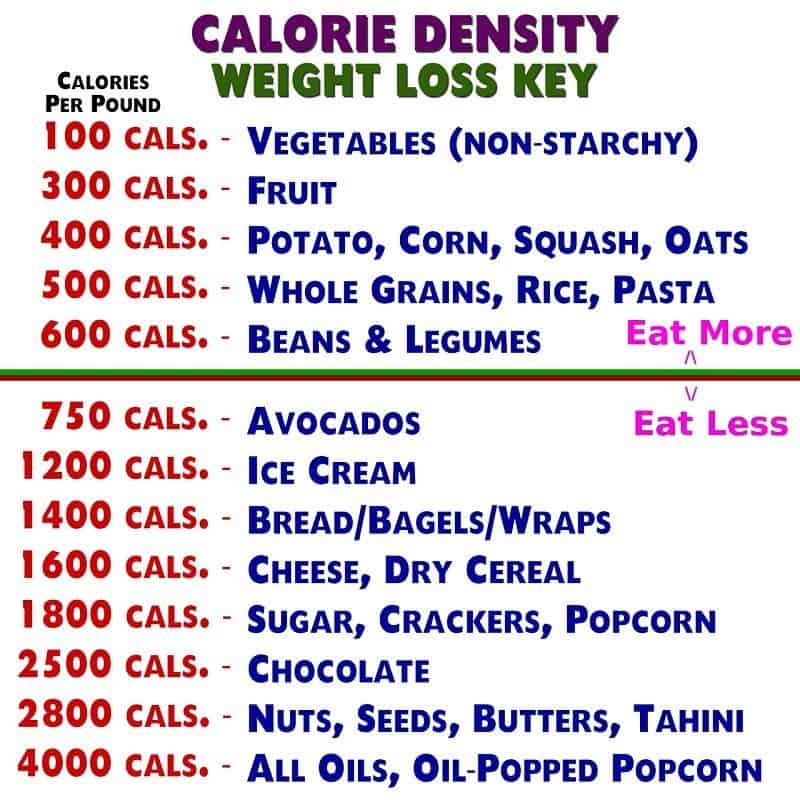There is an ongoing debate regarding whether or not humans are carnivorous animals. Giving up meat was very difficult to wrap my head around when I transitioned to a vegan diet. There are several areas of research to take into consideration when making this important decision.
A plant-based diet is certainly healthier than eating meat. The greater the amount of meat consumption in the diet the higher your risks go up for a number of dietary diseases. In contrast, the more plants you eat the lower your risks are for acquiring these same illnesses.
There may be a way to include some meat in your diet and still remain healthy, however.
Benefits of consuming meat
There are some very basic benefits to meat consumption. It can provide some essential nutrients like iron, protein, zinc, selenium, and B12.
Iron
Iron is an important component of hemoglobin, the substance in red blood cells that carries oxygen from your lungs to transport it throughout your body. If you are unable to get enough iron from your diet you can become anemic.
Anemia results from a lack of red blood cells, and in turn, a lack of oxygen typically carried by healthy functioning cells. An insufficient supply of red blood cells can result in shortness of breath, fatigue, and impaired immune function.
There is a major caveat with obtaining your iron from meat sources instead of plants. Iron from meat sources is heme iron. This form is more bioavailable than iron bound to plant sources. That means the heme iron is more readily absorbed by the body.
Iron is a mineral that you only need in small amounts. Heme iron is particularly oxidative when taken up by the human body. If you are going to get your iron from meat, be sure you are not taking in too much.
Adult men require about 8mg of iron per day, while adult females require closer to 18 mg per day. Women need much more iron than men due to their menstrual cycle.
Non-heme iron can be found in a number of plant sources such as:
- lentils
- chickpeas
- chia seeds
- cashews
- flax seeds
- tofu
- hemp seeds
- pumpkin seeds
- kale
- beans
- quinoa
- dried apricots & figs
Protein
Protein is an important component of every cell in the body. We use protein to build and repair tissues. Protein is also required to make enzymes, hormones, and other body chemicals. Protein is an important building block of bones, muscles, cartilage, skin, and blood.
Although protein is found in almost all natural foods, meat has a particularly high concentration of protein. One 3-ounce serving has about 45% of the Daily Recommended Value (DRV) of protein. That’s about half of your daily protein requirements coming from one small-sized steak, for instance.
For those who choose to obtain their protein from plant sources, you can easily obtain your recommended daily amount without intentionally adding high protein foods. Protein is literally in everything, including:
- veggies
- fruits
- grains
- legumes
- nuts
- seeds
Plants are where the animals get their protein in the first place. Non-meat eaters simply cut out the middle man by eating the plants directly.
Zinc
Zinc is found in cells throughout the body. It helps the immune system fight off invading bacteria and viruses. The body also needs zinc to make proteins and DNA, the genetic material in all cells. Zinc also helps wounds heal and is important for proper senses of taste and smell.
Red meat is a particularly good source of zinc. It can be found, however, in all other meats to a lesser extent. One 3.5 ounce serving of red meat may contain up to 44% of your RDV of zinc. Again, that’s almost half your daily requirement coming from one small serving of meat.
You can also obtain your entire recommended daily amounts of zinc from plant foods such as:
- beans
- chickpeas
- lentils
- walnuts
- cashews
- chia seeds
- hemp seeds
- pumpkin seeds
- quinoa
Selenium
Selenium is important for reproduction, thyroid gland function, DNA production, and protecting the body from damage caused by free radicals and from infection.
Adults require about 55 mcg per day of selenium to maintain healthy functions throughout the body. Most people have no problem getting enough selenium because they tend to eat foods grown or raised in many different areas with access to many different types of soil.
As long as you eat foods from different areas of the country you will have no problem meeting your selenium needs.
Selenium is also found in plant sources such as bread, cereal, and other grain products. Brazil nuts have the highest concentration of this mineral with 68-91 mcg per nut! That is well over the recommended 55 mcg per day so take it easy on the Brazil nuts. Too much selenium can be harmful.
Vitamin B12
Animal sources provide people with their daily B12 consumption because the animals spent time grazing in the dirt and perhaps drinking out of non-chlorinated water sources. Humans used to obtain their B12 in the same manner that these domesticated animals do, but modern sanitation advances has left us extremely B12 deficient.
If you do not consume animal products, it is vital to obtain at least 50 mcg per day from a vitamin B12 supplement. Others choose to take one large dose every week or two. Sometimes that can result in a 1,000 mcg supplement every other week.
B12 is important for brain development, maintenance, and function, among other things. So be sure you are taking your supplement if you do not consume animal foods such as beef, fish, or poultry.
Pitfalls of meat consumption

TMAO
TMAO, trimethylamine N-oxide, is a byproduct produced by the metabolism of choline-containing substances such as meat, fish, poultry, and eggs. Bacteria in your gut feast on the choline and, in turn, produce TMA, or trimethylamine. Our liver takes the TMA and converts it to TMAO. Red meat appears to have the most dramatic increases on TMA production.
The more TMA producing microbes you have living in your gut the more TMA is produced, and ultimately, the more TMAO is converted by the body. Those who do not eat choline-containing foods, again these are meat, fish, poultry, and eggs, do not cultivate the necessary environment needed for TMA producing bacteria to thrive.
Studies reveal that vegans have the least amount of TMA since they eat virtually zero animal products, followed by vegetarians and the like who tend to consume minimal animal products such as the occasional egg. So TMAO is almost exclusively found in those consuming animal products. The more you consume, the more TMAO you subsequently produce.
Recent analyses have linked high blood levels of TMAO with a higher risk for both cardiovascular disease and early death from any cause. Researchers found that people with higher levels of TMAO in their blood may have more than twice the risk of heart attack, stroke, or other serious cardiovascular problems, compared with people who have lower levels. Other studies have found links between high TMAO levels and heart failure and chronic kidney disease.
IGF-1
IGF-1 stands for insulin-like growth factor. Insulin-like Growth Factor 1 (IGF-1) is a hormone with a similar molecular structure to insulin. It’s vital to childhood growth and encourages cell growth and proliferation in adults. It’s naturally produced by the liver and its production is stimulated by growth hormones.
IGF-1 also promotes each of the key stages of cancer development: the growth of the cancerous cells, vascularisation of cancerous tissue (blood vessel growth) and metastasis. In addition, it also prevents natural cell death (apoptosis) so the effect on cells with cancer potential can be dramatic.
Animal protein is the major stimulator in IGF-1. This includes protein from meat, fowl, fish, eggs, and dairy. Excessive amounts of meat consumption, as is the case in the standard western diet, has been shown to significantly elevate IGF-1 levels. This leads to a subsequent increased risk in carcinogenic cell and tumor growth throughout the body.
Plant-based foods, on the other hand, have been shown to reduce insulin-like growth factor activity in adults. Foods like pulses, whole grains, fruits, and vegetables normalize carcinogenic activity by reducing free radicals with antioxidant activity.
Vegan diets are associated with lower levels of IGF- 1 and higher levels of IGF-binding proteins 1 and 2 (these proteins limit the availability of IGF-1) compared with an omnivorous or even a vegetarian diet. The less meat you eat the lower your circulating IGF-1 levels.
Saturated fat

Saturated fat is greatly associated with chronic illnesses such as heart disease, stroke, obesity, diabetes, high blood pressure, cancer, and cognitive decline. The greater the amount of dietary saturated fat consumed the higher the risk increases for acquiring one or several of these deadly diseases.
We all need essential healthy fats to carry out necessary metabolic processes. But saturated fats are non-essential, meaning, they are not required by the human body. So there is no point in consuming them in your diet.
Saturated fats are found almost exclusively in animal products such as meat, eggs, dairy, fish, palm and coconut oils, and poultry. Consuming too much saturated fat leads to the build-up of cholesterol in the arteries.
These build-ups gradually lead to a greater restriction in blood flow. Fewer nutrients and oxygen are delivered to different parts of the body. And eventually, clogged arteries will cause a heart attack or stroke if not treated.
How do we treat clogged arteries? Thankfully, studies have shown that we can unclog our arteries by removing the foods that clogged them in the first place!
Doctors Dean Ornish and Caldwell Esselstyn are the pioneers in reversing heart disease with diet and lifestyle intervention. They have shown how a diet rich in whole plant foods and low in added fats and animal products can steadily arrest and reverse heart disease.
Cholesterol
Cholesterol is carried through your blood, attached to proteins. This combination of proteins and cholesterol is called a lipoprotein.
What we typically refer to as “bad” cholesterol is low-density lipoprotein (LDL) cholesterol. It is considered the unhealthy form of cholesterol because it can build up in your arteries and form fatty, waxy deposits called plaques.
As illustrated above, clogged arteries can lead to an insufficient amount of oxygen and nutrients being delivered to cells and organs throughout the body.
Ultimately, when cells are not provided with an adequate supply of oxygen and nutrients they can die. The result may be a cardiovascular accident, a stroke, or even death.
Cholesterol is exclusively found in animal products such as meat, eggs, cheese, butter, poultry, and fish. Eggs are the number one culprit at a whopping 187 milligrams. With poultry and beef coming in second and third respectively.
Our bodies make all the cholesterol we need, so there is virtually no reason to consume dietary sources of cholesterol. Plant foods are naturally lacking in cholesterol. You can eat all the greens, beans, grains, fruits, etc. you like and never have to concern yourself with cholesterol testing.
Meat is deficient in essential nutrients
When you choose animal foods like meat over healthier plant-based alternatives you are missing out on opportunities to obtain your body’s daily nutrient requirements.
Meat is greatly devoid of many essential nutrients, aside from those listed above in the “Benefits of eating meat” section.
For instance, Vitamin C is solely found in usable amounts in plant sources such as broccoli, cantaloupe, cauliflower, kale, kiwis, and papaya.
Vitamin C is a powerful antioxidant that is important for the maintenance of connective tissue. It also functions as a co-factor for many enzymes in the body and is required for the absorption of iron.
Other important nutrients lacking from a predominantly meat-based diet are flavonoids, which are antioxidants found in virtually all plant food. Four major flavonoids you will not find in meat are:
- Quercetin
- Catechins
- Hesperidin
- Cyanidin
These are known to improve your overall risk of heart disease, improve brain function, as well as improve digestive health.
Fiber is also completely missing from meat dietary sources. Fiber is essential for proper gut health, which in turn, provides improved immune function and mental health. Fiber also aids in digestion.
Diets focused around meat consumption may suffer from constipation, diverticulitis, gall bladder, and kidney disease due to obtaining insufficient amounts of dietary fiber.
Benefits of a plant-based diet

Fiber
Plant foods are loaded with all kinds of fiber. Fiber is the indigestible portion of plant food that feeds the bacteria in our microbiome. Fruits, veggies, legumes, and whole grains are where you can find the greatest sources of fiber.
Some of the different types of fiber include:
- beta-glucan
- pectin
- inulin
- lignans
- resistant starch
Beta-glucan is a helpful prebiotic. A prebiotic is just a term for the fiber that feeds beneficial bacteria in the digestive tract. This type of fiber ferments in the colon where it stimulates the growth of beneficial bifidobacteria. Ultimately, this can lead to improved colon health.
Pectin is another form of prebiotic found in certain fruits. This type of fiber may promote the growth of beneficial bacteria in the colon. Pectin has been shown to stabilize blood sugar levels after meals.
Inulin is another form of prebiotic fiber that belongs to the fructan group. As with beta-glucan fibers, inulin assists with colon health by stimulating the growth of beneficial bifidobacteria. You can find this type of fiber in various fruits and veggies, such as bananas, artichokes, onions, and asparagus.
Lignans are a form of insoluble fiber that you may find naturally in flax, rye, some vegetables. Insoluble fiber simply means the fiber stays firm and maintains its shape when submerged in water. Lignans have been shown to reduce the risk of heart disease and reproductive cancers. There is also some evidence that they may assist in immune function.
Finally, resistant starch is a type of carbohydrate that resists digestion in the stomach and intestine. As with the other fibers, resistant starch has been shown to improve colon health by promoting the growth of beneficial bacteria in the large intestine. You can find resistant starch in foods like potatoes, bananas, whole grains and legumes.
Again, fiber can only be found in plant sources. Animal sources are completely lacking in all types of fiber and thus cannot provide any of the above listed benefits.
Antioxidants
Antioxidants are substances that may protect your cells against free radicals, which may play a role in heart disease, cancer and other diseases. Free radicals are molecules produced when your body breaks down food or when you’re exposed to tobacco smoke or radiation. So, you are inevitably exposed to free radicals throughout your lifetime.
Antioxidants ameliorate the effects of free radicals by reducing the harmful outcomes involved in oxidation. This, in turn, reduces the amount of inflammation experienced within the body. Inflammation has been implicated in a number of ailments, such as obesity, arthritis, bowel disease, and cognitive impairment.
Plant foods are the only substantial sources of antioxidants.
- Fruits
- Veggies
- Whole grains
- Nuts
- Seeds
- and cocoa are great antioxidant sources.
Try to choose plant foods containing different colors of the rainbow to ensure you will receive an array of various antioxidant sources. Reach for blues, reds, oranges, yellows, and purples.
Blueberries, blackberries, raspberries, strawberries, and cranberries are among the top fruit sources of antioxidants. You can mix these in your morning oatmeal, or simply have them for a snack.
Goji berries are extremely potent in antioxidants as well. They have even been applied for medicinal uses in reducing inflammation.
You can even obtain antioxidants from tea and coffee. Although I prefer whole food sources that do not contain harmful side effects, as is the case for caffeine, at least you will be getting some positive antioxidant benefits.
Deficient in saturated fat, cholesterol, & calories
Plant foods are not good sources of saturated fats, cholesterol, or rich concentrations of energy. Saturated fat and cholesterol are showcased in the “Pitfalls of meat consumption” section above, so you should already have a good idea as to why this plant-based benefits are so significant.
You are substantially reducing your risk for a number of chronic illnesses by consuming foods deficient in saturated fat and cholesterol, including diabetes, heart disease, high blood pressure, cancer, and dementia.
Now, why is it beneficial to consume foods low in calories? Vegans, those individuals who do not eat meat or other animal products, have consistently been shown to possess lower BMIs than those who do consume meat. A BMI is simply a measurement of body fat.
Even when researchers were able to control for things like exercise, overall daily calories, smoking, age, etc., vegan still reveal consistently healthier BMIs and lower body fat percentages. Even couch-potato vegans had lower BMIs than the most athletic meat-eaters in studies where exercise was not controlled for.
How can this be? Calorie density! Plant foods hold fewer calories, but more nutrients than animal foods. That means you can eat as much as you want all day every day, and you will remain healthy and lean. Let me show you the math in the image below.

I use this chart a lot because it easily depicts the difference between eating calories from whole plants vs animal foods and highly refined products. You will reach your daily upper-calorie limits much more quickly when eating foods like ice cream and bread, as opposed to eating foods above the line like veggies, and legumes.
There is an important caveat here. Not all plant foods are created equal in the calorie department. As you can see, nuts, seeds, and avocados are whole plant foods, but they are also fairly high in nutrient density. Proceed with caution with these foods. Only consume in small doses.
The point is, even if you are consuming plants with high-calorie amounts, you are still getting tremendous benefits from the high nutrient-density load. For processed and animal products, however, you get the high calories without a lot of nutrient benefit.
So, eat foods above the red/green line as much as you like until you are full. But any foods below this line should only be eaten in extremely small, controlled amounts, or on special occasions.
Plants provide everything that meat can & then some (except B12)
Plants provide nearly all the same nutrients that meat provides, with the sole exception of B12. The advantage of acquiring your selenium, zinc, protein, and iron from plants is that you get all the beneficial nutrients, antioxidants, fiber, and phytochemicals without the harmful components you obtain from acquiring these nutrients from meat sources.
For instance, you will not be weighed down by the cholesterol, saturated fat, hormones, antibiotics, or fecal contamination you are most certainly going to obtain from meat when you choose plants instead.
Vitamin B12 is a unique exception, as mentioned earlier, because humans used to obtain their B12 from the same sources that animals do, by drinking out of streams and eating unwashed vegetables and fruits. Our modern sanitation practices have wiped out all our natural B12 producing bacteria, but in turn, we get to live free of many infectious diseases, like cholera, for example.
Vegans are universally instructed to consume at least 50 mcg of vitamin B12 every day or up to 1,000 mcg every other week. This supplement is inexpensive and relatively easy to come by. Supplements are not regulated by the FDA, however, so I would always do a little research before choosing a particular brand to go with long term.
So there you have it. Vegans and vegetarians are at no disadvantage when it comes to restricting meat from their diet. After reviewing the facts, it would appear that meat-eaters are the ones with a true disadvantage.
Although it may take a while for our society to catch up with the preponderance of evidence revealing the benefits of opting out of meat consumption, now you have the necessary information to proceed on your healthful dietary journey.
Pitfalls of a meat-less diet

Difficulties gaining or keeping on weight
As long as you are eating healthy foods in replace of the meat-based meals you will easily start shedding pounds. Sometimes this may mean losing a lot of weight very quickly. For the majority of the population, this is a great side-effect. To some men and/or athletes, however, this comes as quite a concern.
There are two basic strategies that will allow you to eat a healthy diet without meat while maintaining your overall body weight.
- Eat high-calorie plant foods
- Exercise regularly, particularly strength training
Eating high-calorie plant foods
All plant-based meals should center around starches such as potatoes, squash, rice, quinoa, wheat, and other whole grains. These will provide the bulk of your calories.
Other high calorie plant foods include nuts, seeds, avocados, and dried fruit. You can also incorporate more processed plant foods into your diet such as whole-grain bread, pasta, tortillas, and nut-butters that don’t include oil.
Focus the bulk of your calories on the starchy carbohydrates as opposed to the high-fat plant-based options listed above. The objective is to maintain lean body mass, not replace it with fat.
Exercise regularly, particularly strength training
If you are trying to maintain or gain weight while on a plant-based diet you will need to incorporate a regular exercise regimen into your week. This will ensure the maintenance of lean body mass.
I recommend strengthening every major muscle group at least once a week. For most, that may mean separating your workouts to include one day of upper body work and then a separate day for lower body strength training.
Try to do two to three exercises per muscle group per week. For instance, if I am trying to target my quadriceps, the thigh, I will do three sets of squats followed immediately by three sets of lunges.
Lack of convenience
The greatest hurdle on the plant-based learning curve is adapting to a life that is greatly lacking in convenience when compared to the normal Western dietary style. Although the tides have slowly been shifting in favor of a whole-foods plant-based lifestyle, we have a long way to go before we can stop at a drive-through at a fast-food joint the way that non-vegans do.
A lack of convenience may impact your health solely based on the observation that people tend to eat what will require the least amount of effort and preparation. For instance, when I began eating solely plant foods 5 years ago, I had to learn how to cook, meal prep, and grocery shop. These skills had never been a part of my general repertoire until I was nearly 30 years old!
Yes, eating healthy is a commitment that takes time, energy, and practice. That should be expected given the importance of providing your body with the proper nourishment it requires to thrive decade after decade.
After you begin to find foods and recipes that work for your taste preference, lifestyle, and budget, you are well on your way to the lifestyle you have always wanted. Weekly grocery shopping, meal prep, and cooking become second nature after you get the basics down.
Traveling can be difficult when you are forced to eat processed vegan convenience foods, but thy’re not all so bad. I look for raw nut mixes, fruit, and any raw veggies I can locate. It’s also helpful to take along pre-made snacks if at all possible.
Overall, the more planning and preparing you do on a plant-based diet the more you will succeed. And although it takes a little extra forethought and effort, it is completely worth the health benefits you will surely achieve.
Plant-based vs meat-based takeaways
After considering the benefits and pitfalls of each dietary pattern, it is clear that a plant-based diet outweighs the pros and cons far better than the meat-based approach.
Late’s recap the major highlights:
- Plant foods contain all the essential nutrients that can be acquired from meat except vitamin B12.
- A vitamin B12 supplement is recommended for everyone, but particularly those who choose not to consume animal products.
- Plants provide plenty of zinc, selenium, iron, protein, antioxidants, fiber, and other micronutrients needed to carry out regular metabolic processes.
- Meat offers some of the healthy nutrients found in plants, but only at the cost of also providing harmful components such as saturated fat, cholesterol, TMAO, IGF-1, and extra calories.
- By choosing plant alternatives to meat you can gain a number of health benefits while reducing your risk of acquiring many chronic diseases.
Karli Jackson

